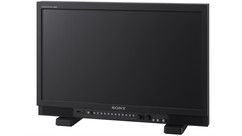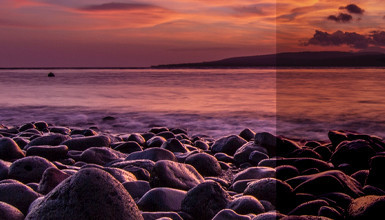Technology
First, let's review the four widely used standards for HDR distribution.
Dolby Vision remains the dominant approach for HDR, as the other formats can be derived, semi-automatically, from a Dolby Vision master. Dolby Vision allows for the highest brightness values, theoretically up to 10,000 "nits" (a short-hand term for the standard unit of display brightness, candellas per square meter or 'cd/m2'). It also specifies a minimum of 10 bits of color resolution and accommodates 12-bit files as well. It can use either the P3 colorspace, which we know from the Digital Cinema Initiative (DCI) standards, or the new ultra-large BT.2020 color space.
HDR10 is a statically limited “one size fits all” approach that extends to 1000 nits of maximum brightness, 10-bits, and includes color spaces for REC709, DCI-P3, P3-D65, and BT.2020. At this point, it’s meant for the primary HDR grade performed on a mastering display, which will clip all values above 1000 nits. There is a good amount of HDR10 content already out there (primarily on Amazon Prime streaming video). Any tone-mapping (for displays that either can't reach 1000 nits of brightness, or those that can comfortably exceed it) is left up to the processing in the display itself.
HDR10+ is an extension of HDR10 that adds dynamic metadata on a per-sequence basis (as little as a single frame) — essentially recording the minimum and maximum brightness for each section and feeding that as metadata to the tone-mapping engine in the display in conjunction with the PQ curve, a Log-like brightness-encoding format used by Dolby Vision and HDR10 as well. This is a very similar approach as Dolby Vision, however HDR10+ "only" specifies a maximum brightness for highlights of 4000 nits and is limited to 10-bit files only.
Hybrid-Log Gamma is an HDR format that aims to be backwards-compatible with REC709 and is meant for sports, news, concerts, and other live events. The postponement of the Olympics, and the cut-over to the ATSC 3.0 spec for cable and streaming boxes, has delayed H-LG’s roll out in terms of content.
For productions with a requirement to deliver in HDR, the starting point for most HDR masters is a static HDR10 grade, performed on a high-end mastering display such as the BVM-HX310 from Sony or the XM series of displays from Flanders Scientific. For productions finishing in Dolby Vision, a version is created using scene-based analysis to create metadata for tone-mapping. Once the Dolby Vision version has been created, which also creates an auto-generated SDR/REC709 version (which can be “trimmed” — modified for creative effect without re-grading from scratch) an HDR10+ version can be derived from the Dolby Vision master. This accounts for all variants (other than the live-oriented H-LG) essentially being created simultaneously as a matter of course during Dolby Vision grading/mastering.
Samsung remains the only major TV manufacturer who has not implemented Dolby Vision, however they do support HDR10+, which can be derived from a Dolby Vision master (again, after doing a static HDR10 grade).
New for 2020 is Dolby Vision IQ, which uses metadata gathered from the ambient light sensors built into many consumer TVs. Manufacturers use the data from these sensors to often crudely ramp mid-tone brightness up and down depending on how bright of an environment the display is being used in. Dolby Vision IQ aims to standardize this behavior so that the brightening and darkening of mid-tones happens proportionally to the dynamic scene metadata that is part of the Dolby Vision stream in order to, as much as possible, maintain artistic intent. It’s not known yet how this metadata will be encoded and tools for Dolby Vision IQ are not yet available in the mainstream coloring and finishing tools like DaVinci Resolve.
Professional Displays
For production folks, displays have been a sticking point as far as being able to monitor HDR on set while shooting. When display technology was advancing more slowly, say, from the introduction of backlit LCD flat panel displays in the early 2000s until the widespread availability of OLED panels in the mid-teens, it made sense for manufacturers like Panasonic, Sony and others to standardize on LCD-based displays, which were standard up until the availability of OLED-based displays such as the PVM A-series panels from Sony.
Today, display panel technology — and particularly backlight technologies (massively zoned mini-LEDs and micro-LEDs, and multi-layer transmissive approaches) — are evolving so quickly that display manufacturers are producing many types of panels for professional use. This has also led many high-end consumer displays to adopt features that benefit professionals, principally in color grading, such as “hard-clip” modes that disable tone-mapping to make grading for HDR10 possible. However, these displays all still crucially lack SDI terminals, along with being somewhat fragile and not designed to be moved around a lot.
Current Production HDR Displays
This isn’t a comprehensive list, as many mid-range (and on up) consumer displays qualify for one or more of the HDR standards detailed above but aims to update readers on models that are “on our radar” for professional use.
Sony BVM-HX310
The Sony BVM-HX310 is more or less thought of as the ‘flagship’ HDR grading/mastering monitor. It implements dual-layer transmissive LCD technology, which allows the display to drive brightness to 1000 nits across the entire panel. It uses a monochrome LCD panel between the backlight and the wide-gamut LCD panel in the front to control brightness and contrast down to the pixel level, similar to OLED (though it is a transmissive display with a passive backlight rather than an emissive display like OLED). And, it does not use any kind of local dimming to modulate the brightness of the backlight across different zones. However, it is large and heavy and not especially suited to production on location or outdoors.
Flanders Scientific XM311K & XM310K
The Flanders Scientific XM311K takes a similar technology approach as used in the Sony HX310, which they refer to as ‘LMCL’ for Light Modulating Cell Layer. It features Flanders’ as-usual excellent complement of onboard exposure and signal analysis tools, as well as easily loadable 3D LUTs for both show looks and calibration.
The XM310K model is in the same casework as the XM311K, but it uses a massively-zoned backlight array of 2000 LEDs and can reach a staggering 3000 nits of brightness. Black levels and viewing angles are not quite as good as the XM311K and HX310, and it uses local dimming to create very high in-scene contrast ratios. This display, the XM311K and Sony BVM-HX310 (as well as the discontinued X300) all meet Dolby’s specs (see below) to qualify as Dolby Vision mastering monitors.
Sony PVM-X2400 and X1800
The PVM-X2400 and X1800 are Sony’s newly-announced, and soon-to-be-available SDR/HDR production displays in 24- and 18-inch sizes. These use a high/low brightness mode to allow for up to 1000 nits of brightness over the whole screen and use wide-gamut LCD panels like the HX310. They come in smaller sizes, but without the light-modulating middle LCD layer to control contrast and black levels. This means that black levels are elevated compared to the previous generation OLED-based PVM A-series production monitors; this allows for high-brightness viewing for focus pulling or use on a bright set. The low brightness mode preserves the 100-nit SDR/REC709 brightness standard but with much better blacks for SDR viewing (or for checking the darker portions of scenes while shooting).
SmallHD Vision HDR Production Monitors
SmallHD has introduced a total of four new displays that are classified as ‘4K HDR Production Monitors’: 17" and 24" models in their Vision series, as well as 22" and 24" models in their Cine series. The Vision 24 has Full-Array Local Dimming with >2100 zones and a 10-bit panel. A 1,000,000:1 contrast ratio is claimed, as well as 1000 nits of full-screen brightness, which should make the black level competitive with the "true" blacks of OLED. It features 115% DCI-P3 color space coverage and DCI 4096x2160 resolution. The Vision 17 boasts similar specs but in a more portable 17” size with UHD 3840x2160 resolution.
The Cine series monitors may not offer the combination of specs we’re all looking for for true HDR monitoring, without compromises, but do offer unique features that may earn them a place on set and, potentially, in the grading suite. The Cine OLED 22, in particular, while not achieving anywhere the brightness of the Vision series above, brings the utility and predictability of OLED technology to the landscape that has been missing since the discontinuation of Sony’s PVM ‘A’ series OLED displays. With true zero-nit blacks and 100% P3 color space coverage, this ‘right-sized’ 22-inch model should provide a "missing link" between SDR and HDR.
The Cine 24, a 24-inch model, is being marketed as a ‘High-Bright’ monitor for scenarios where raw brightness is needed over absolute black levels and contrast ratios. This display covers 100% of P3 at 3840x2160 UHD resolution. However, it achieves 1350 nits of maximum brightness for monitoring in daylight or other bright ambient environments.
All are housed in rugged aluminum casework and use SmallHD’s excellent PageOS 4 menu system which includes a custom calibration workflow, as well as great signal analysis tools and LUT capabilities.
Note: all of the above monitors feature BNC terminals capable of receiving a 4K signal directly from most digital cinema cameras.
Apple Pro Display XDR
Apple’s newest display, debuting with the new Mac Pro is, on paper, a superb display for HDR monitoring and grading, however it currently lacks the ability to be utilized, practically, for dedicated playback or monitoring a live camera feed. It uses USB type C ports (only) for connectivity and there does not yet appear to be a way to utilize it other than as a "GUI" (Graphical User Interface) display connected to a Mac. It uses a large array of multi-zoned mini-LEDs in the backlight and has multiple layers of filtration and polarization between the backlight and the color panel. There have been a couple of interesting developments as far as how macOS addresses this display, and calibration is said to be added in a future version of macOS.
Asus ProArt PA32UCX and New PA-32UCX-PK
These are more displays with their primary application as a computer monitor. A case in point as to the rapid evolution of backlight and “multi-layer” panel technologies, Asus introduced the PA32UCX at CES in January 2019 for $3,000. Then, at NAB the same year, they announced that the display would support Dolby Vision. We evaluated the display in 2019. Though it presented a dynamic HDR picture, it exhibited some backlight zone artifacting — ghosting and visible “pumping” of the backlight zones — as well as some issues with viewing angles. With the new PA-32UCX-PK, Asus has added an extra polarization layer to mitigate this behavior. We’ll be interested to take a look at this new variant and see what improvements have been made.
LG Consumer OLED Displays
LG (and Sony, see below) consumer displays from 2019 (the ‘C9’ models) and 2020 (‘CX’) have been relied on for several years as a stop-gap for professional HDR displays. For 2020, a new smaller 48" panel has been introduced that helps make the displays more portable for professional use.
Sony Consumer OLED Displays
Sony uses OLED panels from LG for their own “prestige” line of high-end consumer displays and employ their own silicon for image processing and display management.
Other Displays
Atomos’ Shogun 7, similar to the Shogun Inferno products before it, probably represents the most accurate professional HDR displays sporting SDI terminals selling for under $20K ($1300 at this writing), however at a minuscule 7” size, they are suitable only for on-camera monitoring for framing or possibly for pulling focus in a pinch.
Sony’s BVM-X300 and X300 V2 remain in wide use despite being discontinued (as all pro OLED panels < 48” have been), as do their SDR OLED counterparts, principally the PVM ‘A’ series, and similar displays from Flanders.
Obviously, there is no "perfect" display, however at this point (mid-2020) the field of available options for production professionals who need to see the benefits of HDR in real-time, while shooting on set, looks to (finally) be opening up to include some solid options for productions at different budget and resource levels, which is a welcome change from where we were a year ago.
















AbelCine encourages comments on our blog posts, as long as they are relevant and respectful in tone. To further professional dialog, we strongly encourage the use of real names. We reserve the right to remove any comments that violate our comment policy.
AbelCine publishes this blog as a free educational resource, and anyone may read the discussions posted here. However, if you want to join the conversation, please log in or register on our site.
We use Disqus to manage comments on this blog. If you already have a Disqus account registered under the same email as your AbelCine account, you will automatically be logged in when you sign in to our site. If not, please create a free account with Disqus using the same email as your AbelCine account.